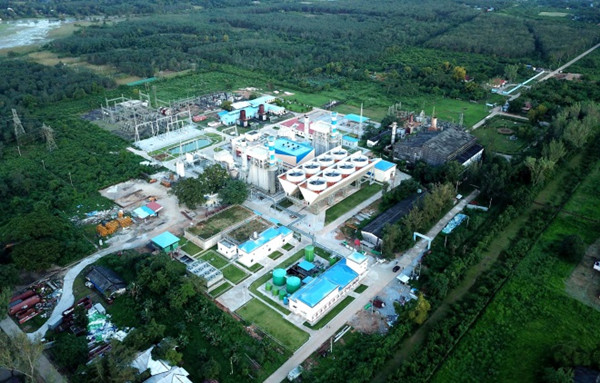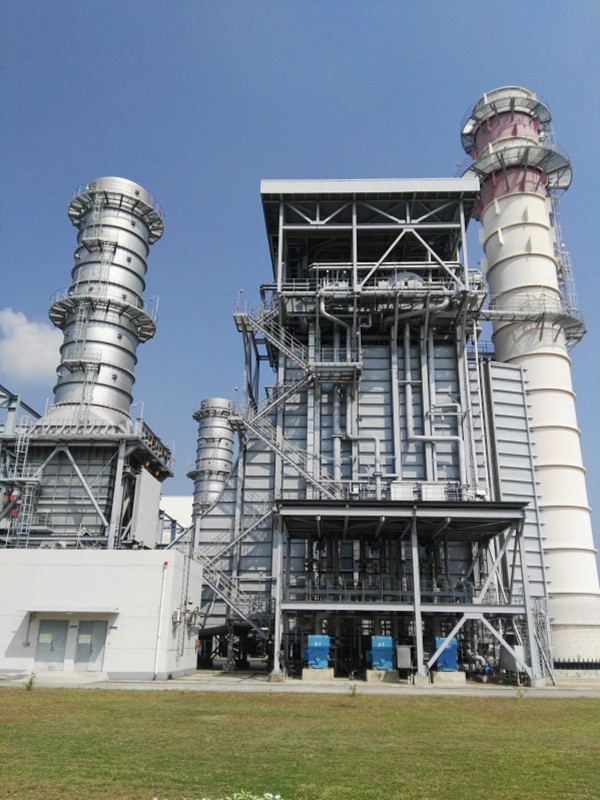CEEC's CIIE role
The China International Import Expo (CIIE) officially opened in Shanghai on Nov 5. The Expo is an important platform for a new round of reform and opening-up that will be deeper than before.
Energy China (CEEC), one of the central SOEs, has decided to make its contributions to the CIIE and seek productive international cooperation by using its own advantages and characters in response to national reform and opening-up.

Myanmar’s gas turbine power plant built by CEEC
Detailed preparatory works
On Sept 14, a meeting was held in the headquarters of CEEC by various trading groups from its subsidiaries around China to detail the plans for engaging in the CIIE. Meetings like this were common recently in preparation for the CIIE.
“CEEC pays high attention to its work related to the CIIE since we started to participate in the expo. Trading groups were quickly organized and the CIIE tasks were regarded as some of key ones of the year,” said the CEEC’s staffer in charge of CIIE tasks.
Trading groups’ performances will be evaluated by their results and the groups have organized their companies to comb purchase needs for four times and prepare new agreements.
At the same time, they are preparing a group contract signing ceremony at the CIIE to project a good image of the company. For example, China Gezhouba Group Corporation, a CEEC subsidiary, made extensive preparations for the contract signing ceremony after it decided to buy gas turbines from a foreign company.
In addition, CEEC’s subsidiaries in Shanghai have taken responsibility for arrangements and logistics at the CIIE in spite of their heavy workloads.
CEEC’s group contract signing ceremony was held in the CIIE on Nov 6, participated in by its subsidiaries. The imported products included gas turbines, sewage treatment equipment, diesel engines, pipelines and welding materials.

Bangladesh’s gas fueled power plant built by CEEC
Seek and take opportunities
Engaging in the CIIE is important for CEEC’s business transformation and high-end development.
CEEC was one of the first companies to go global at the beginning of the reform and opening-up. It imported technologies and innovated to gradually master key technologies, and now ranks at the top in power technologies.
As a participator and practitioner of China’s electric power advance, CEEC built Gezhouba dam, which was the first dam above the Yangtze River, the first nuclear station, the first terminal power generating unit that is able to produce millions of kW and the first super high-tension line. All of these are the products of China’s reform and opening-up in terms of electric power.
In the new era, CEEC has a new strategic goal --- to be an international competitive engineering company by 2020.
Equipment manufacturing, a major part of CEEC, is critical for the whole company as it transforms and pursues productive development.
Over 200 of the world’s top 500 enterprises are gathering at the CIIE to present their new products and technologies about intelligence and high-end equipment. CEEC is expected to cooperate with them, boosting China’s development in the field of equipment manufacturing and energy saving.
In recent years, CEEC has cooperated profoundly with the world’s leading companies including Caterpillar, GE and Siemens. In 2017, CEEC’s import volumes increased three times over their levels five years previously. In the next five years, CEEC will expand its imports of high-end equipment and materials.
Expanding opening up and pursuing win-win cooperation
In recent years, the CEEC has made full use of its advantage of running a whole industry to service China’s electric development and bring China’s electric standards, technologies and equipment to a global level.
To date, the annual rate of increase of CEEC’s international business has reached over 20 percent with more than 100 nations and regions involved. Over 700 projects are underway or preparing to start in countries involved in the Belt and Road Initiative, with a contract volume of 300 billion yuan ($43.38 billion)
CEEC’s next step is to use its advantage of a whole industry chain to expand its business to non-electric infrastructure constructions including international railroads, roads, ports and buildings.



